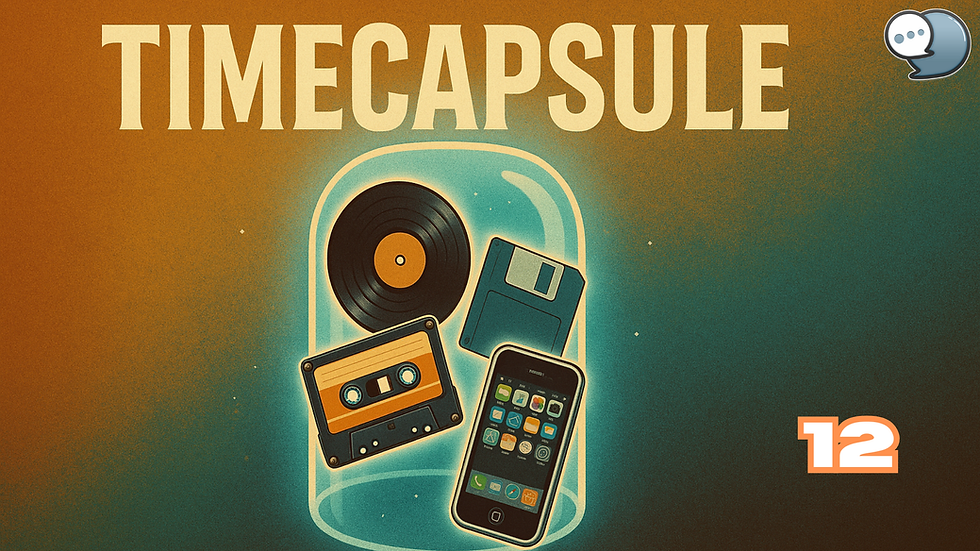The Unfolding of a Tech Revolution Apple's Macintosh Launch in 1984
- internchatstick
- Jun 24
- 4 min read

In 1984, an extraordinary moment in technology unfolded when Apple introduced the Macintosh during an unforgettable Super Bowl commercial. This landmark event not only showcased the cutting-edge features of the Macintosh but also signaled the start of a new chapter in personal computing. Episode 12 of our podcast delves into this transformative period, exploring Steve Jobs' visionary approach, the unique design of the Macintosh, and its lasting impact on the tech landscape.
A Visionary Introduction
Steve Jobs blended creativity with technical insight like no other. His vision for the Macintosh wasn't just about making a computer; it was about creating an accessible and user-focused experience. Jobs wanted to break the traditional barriers that made computing feel exclusive.
From day one, the Macintosh aimed to be approachable to all users. It emphasized ease of use, focusing on intuitive design rather than technical know-how. This commitment to making technology relatable was a pivotal shift in how people perceived computers. For instance, in a time when computers mostly used complex codes and command-line interfaces, the Macintosh's focus on graphical user interfaces (GUIs) made it feel welcoming and usable to everyday people.
The Groundbreaking Launch
The Macintosh's launch was a groundbreaking event, notably highlighted by the Super Bowl ad directed by Ridley Scott. This advertisement transcended mere promotion, becoming a cultural milestone that positioned the Macintosh as a revolutionary tool.
The ad painted a picture of a dystopian future reminiscent of George Orwell's "1984,” suggesting that the Macintosh would free people from the conformity that characterized the computing landscape. With its compelling narrative and striking visuals, the commercial sparked excitement and intrigue, making the Macintosh a powerful symbol of creativity and independence.
The Design That Broke the Mold
One notable feature of the Macintosh was its stunning design. Unlike its contemporaries, the Macintosh utilized a graphical user interface (GUI) filled with icons and windows, rendering it both visually appealing and easy to navigate.
The shift from text-based command lines to an interactive visual interface represented a monumental change in how users connected with computers. For instance, statistics indicate that the Macintosh led to a 60% rise in new computer users who previously felt intimidated by technology. By employing a mouse for interaction, the Macintosh invited users to engage in a more intuitive manner, effectively rethinking computer communication.
Impact on Personal Technology
The effects of the Macintosh launch rippled through the tech world and beyond. It began a shift in personal computing that prioritized user experience over technical complexities. The simplicity and charm of the Macintosh foundation set a gold standard, driving innovations in the industry.
Research shows that within three years of the Macintosh launch, desktop publishing emerged as a major industry sector, with 43% of all graphics programs created being designed specifically for the Macintosh. Computers transitioned from being niche, business-only tools to beloved personal devices for a broader audience. The Macintosh helped reshape the cultural narrative surrounding technology, showing that computers could be for everyone.
The Marketing Genius
In 1984, Apple's marketing strategies for the Macintosh were as innovative as the product itself. The company capitalized on storytelling, crafting narratives that resonated deeply with potential users. The Super Bowl advertisement was a part of a broader campaign that included grassroots initiatives and direct customer engagement.
This strategic marketing transformed the Macintosh into more than a product; it became a symbol of creativity and empowerment. Apple successfully tapped into a growing desire among consumers for technology that reflected their personal identities. They sold not just a machine but a vision of the future, resonating with millions seeking innovation and individual expression.
Setting the Stage for the Future
The launch of the Macintosh laid the groundwork for the surge of personal technology that followed. It introduced concepts that became standards in the tech industry, such as user-friendly interfaces and sleek design.
After its release, many tech companies began adopting Apple’s approach, focusing on innovation and creativity in product development. This shift paved the way for the diverse range of devices and platforms we enjoy today. For instance, in the years following the Macintosh launch, personal computer sales grew at an astounding rate of 15% year-over-year, indicating a massive shift in consumer demand for personal computing devices.
Reflecting on a Landmark Moment
The Macintosh’s unveiling in 1984 was a significant milestone in personal computing. It represented the dawn of a new era defined by innovation, creativity, and user-centered design.
Under Steve Jobs' leadership, combined with ingenious marketing strategies, Apple didn't just launch a product; they changed the way people relate to technology. Looking back, it's clear that the Macintosh was more than just a computer. It ignited a personal technology revolution, shaping our interactions with digital devices for generations to come.
If you're curious about how the Macintosh has evolved over the years and how its design principles continue to influence modern technology, listen to our podcast for an informative exploration of this remarkable legacy and the ongoing journey of innovation in the tech world.






Comments